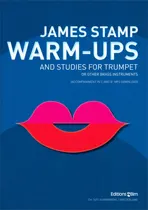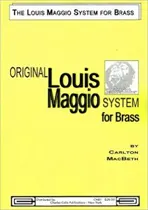Probably the Arban´s method (link to Amazon) for trumpet (also valid for cornet and other brass instruments) is, as is commonly said, the trumpeter’s Bible. Why? Simply because it is almost certainly the most voluminous and complete trumpet method ever written for this instrument.

Content of the Arban´s method
In this method, we can find exercises of almost any technical facet that a trumpet student needs to know, and although now we will see in more detail what types of exercises it contains, we can say that it covers a great variety of them (flexibility, technique, scales, studies, etc.). etc…)
Although the Arban method starts with simple exercises, it cannot be considered the best method to get started in the world of the trumpet, since it does not contain a large selection of beginner exercises and, in addition, it quickly increases in difficulty, so it can be difficult. something complex. However, as soon as you have a basic level and register (at least up to a Sun on the pentagram) you can start studying it without any problem.
On the other hand, it is a method organized by type of exercises, so it should not be studied in order from start to finish. Within each type of exercise, they are ordered by difficulty, but it is possible that page 100 has simpler exercises than page 50. Therefore, it is necessary to be clear about what you want to study at each moment and in this way, look for the most suitable exercise.
Going into detail, it can be said that the Arban method is made up of two parts:
- A more technical first part, made up of individual exercises where one or another technical facet of the instrument is practiced. In it you can find exercises of the following types:
- Studies first: this is the simplest part of the method, where you start with long note exercises and get more complicated until you reach eighth notes and sixteenth notes. In addition, syncopation and 6×8 exercises are included.
- The second part focuses on tied note exercises, where the note is changed by means of pistons or by means of flexibility.
- The entire third part focuses on major, minor, and chromatic scales in all keys.
- In the fourth part you will be able to rehearse everything related to musical decorations (grupettos, appoggiaturas, mordentes, etc…)
- The fifth part, called advanced studies, covers different topics: such as intervals, triplets, fusas or cadences.
- Finally, a part is included to practice double and triple chopped.
- A second, more musical part, made up of different songs, duets, works and characteristic studies to put into practice everything learned in a more interpretive context. Basically 4 types of exercises are included here:
- The Art of Phrasing, containing 150 melodies.
- 68 duets for two trumpets.
- 14 characteristic studies, of a much higher complexity.
- 12 fantasies that includes the famous “Carnival of Venice”
Organization of exercises by difficulty
The Arban method is so voluminous that we can find exercises from a basic level (although not initiation), up to exercises typical of virtuoso trumpeters. In other words, it is a method that will accompany you, practically, throughout your life as a trumpeter, and if you are able to finish it, it means that you will have become a great virtuoso of the instrument.
Organizing the more than 500 exercises of this method is extremely complex, so we have had to use different sources to try to group each type of exercise in the course that is usually taught, and thus be able to offer you the best possible information. But if you see that any of them should be in another level, do not hesitate to let us know so that we can correct it.
On the other hand, we are working to create a routine that allows us to study the Arban not as the original (by type of exercise), but by exercise difficulty.
We hope to have it soon!
| FIRST STUDIES (PAG. 11 - 36) | |
| First Studies (Pag. 11 - 22) | |
| Ex. 1 - 50 (Pag. 11 - 22) |

|
| Syncopation (Pag. 23 - 25) | |
| Ex. 1 - 12 (Pag. 23 - 25) |

|
|
Eight and sixteenth notes (Pag. 16 - 31) 6x8 meter (Pag. 32 - 36) |
|
| Ex. 13 - 38 (Pag. 26 - 36) |

|
| STUDIES OF THE SLUR (PAG. 39 - 56) | |
| Ex. 1 - 30 (Pag. 39 - 47) |

|
| Ex. 31 - 69 (Pag. 48 - 56) |

|
| SCALES (PAG. 59 - 86) | |
| Major Scales (Pag. 59 - 74) | |
| Ex. 1 - 41 (Pag. 59 - 67) |

|
| Ex. 42 - 69 (Pag. 68 - 74) |

|
| Minor Scales (Pag. 75) | |
| Ex. 70 - 78 (Pag. 75) |

|
| Chromatic Scales (Pag. 76 - 86) | |
| Ex. 1 - 31 (Pag. 76 - 86) |

|
| ORNAMENTS (PAG. 91 - 122) | |
|
Grupetto (Pag. 91 - 103) Double Appoggiatura (Pag. 104 - 106) Simple Appoggiatura (Pag. 106 - 107) Short Appoggiatura (Pag. 108 - 109) Portamento (Pag. 110 - 111) Trill (shake) (Pag. 111 - 119) |
|
| Ex. 1 - 88 (Pag. 91 - 122) |

|
| ADVANCE STUDIES (PAG. 125 - 130) | |
| Intervals (Pag. 125 - 130) | |
| Ex. 1 (Pag. 125) |

|
| Ex. 2 - 4 (Pag. 126 - 128) |

|
| Ex. 5 - 7 (Pag. 129 - 130) |

|
| Octaves and tenths (Pag. 131) | |
| Ex. 8 - 12 (Pag. 131) |

|
|
Triplets (Pag. 132 - 136) Sixteenth notes (Pag. 137 - 141) |
|
| Ex. 13 - 47 (Pag. 132 - 141) |

|
|
Major and minor chords (Pag. 142 - 146) Dominant seventh (Pag. 147 - 148) Diminished seventh (Pag. 149 - 151) Cadenza (Pag. 152) |
|
| Ex. 48 - 62 (Pag. 142 - 152) |

|
| TONGUING (PAG. 155 - 190) | |
| Triple tonguing (Pag. 155 - 174) | |
| Ex. 1 - 17 (Pag. 155 - 159) |

|
| Ex. 12 - 62 (Pag. 158 - 169) |

|
| Ex. 63 - 76 (Pag. 170 - 174) |

|
| Double tonguing (Pag. 175 - 182) | |
| Ex. 77 - 99 (Pag. 175 - 179) |

|
| Ex. 87 - 114 (Pag. 177 - 182) |

|
| Slur and double tonguing (Pag. 183 - 187) | |
| Ex. 115 - 122 (Pag. 183 - 184) |

|
| Ex. 123 - 134 (Pag. 185 - 187) |

|
| Tonguing applied trumpet (Pag. 188 - 190) | |
| Ex. 135 - 145 (Pag. 188 - 190) |

|
Shortcomings of the Arban´s method
Although the Arban method is, as we have already said, very, very complete, it can also be said that there are certain aspects that it does not cover, for which it would be necessary to focus on other methods that go deeper. For example:
- It doesn’t make any special mention about the initial heating, so you have to resort, for example, to the Stamp method or similar.
- It is not a suitable method if we want to rehearse a high or very high register.
- Likewise, it is also not suitable for the study of pedal notes.
- Finally, we must bear in mind that it is a book that dates back to 1859, so no type of study of modern music, jazz or improvisation can be expected.
Performance of the Arban´s method
Here are some examples of the performance of this method to give you an idea of how it sounds and how difficult it is.
First part (technical)
Second part (songs, duets, fantasies...)
The Carnival of Venice for trumpet
Get the Arban´s method
Arban´s method with online audios
We have the first part of this method perfectly integrated into our “Clave de Mi” player, and you will have the exercises organized by categories and subcategories, so that you can quickly go to practice the exercise you need.
The second part is still under construction, so it will be available in the future so that you can also enjoy it.
Buy Arban´s method
It is always highly recommended to have the methods and pieces in physical format (paper). In this way you will be able to create a great personal library, which will allow you one day to rediscover exercises that you had forgotten, lend your family and friends a book from your collection, or simply look at it and make you remember how hard (and at the same time exciting) was interpreting that work that you have overcome today.
For all this, we have reviewed and selected for you the most recommended, cheap and sold products, so that you can quickly acquire them from Amazon.
Arban´s method in PDF
You also have the option to download the Arban method in PDF.
On the internet you can find different versions (English, Spanish, with different publishers, versions, etc…). However, most of those versions contain only the first part (the technical part, not the musical part). Luckily, we have collected all those “loose parts” to create a single Arban PDF method that contains all the content that I explained above.
The Carnival of Venice for trumpet in PDF
One of the best known fantasies, especially due to the difficulty of its execution, is The Carnival of Venice.
For this reason, we wanted to dedicate a special section to it in case you simply want to download this wonderful work with piano accompaniment. If it is the first time that you face it, we recommend that you try it from the Player of Clave de Mi, lowering the tempo a lot, since there are extremely fast variations in its execution.









